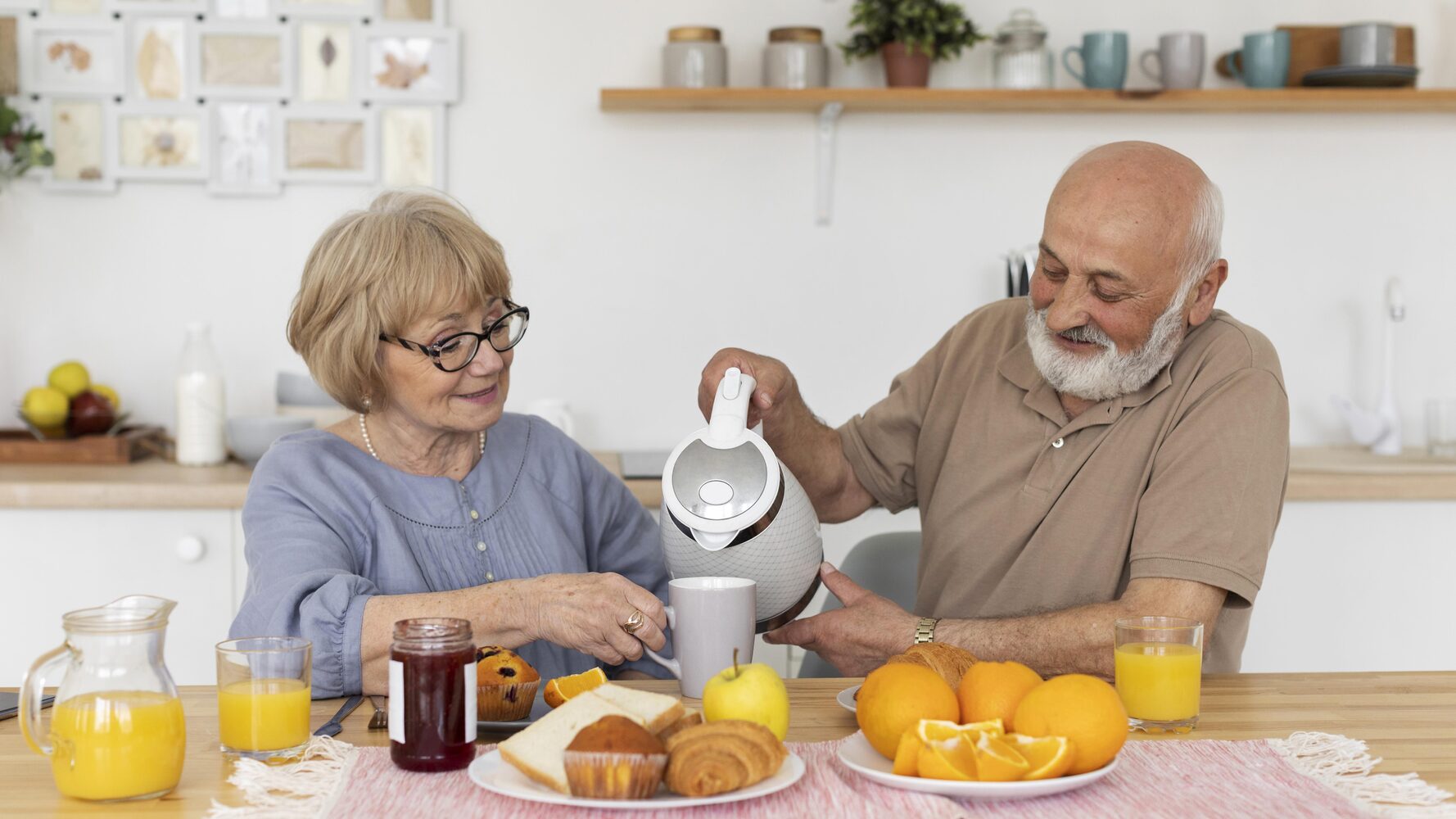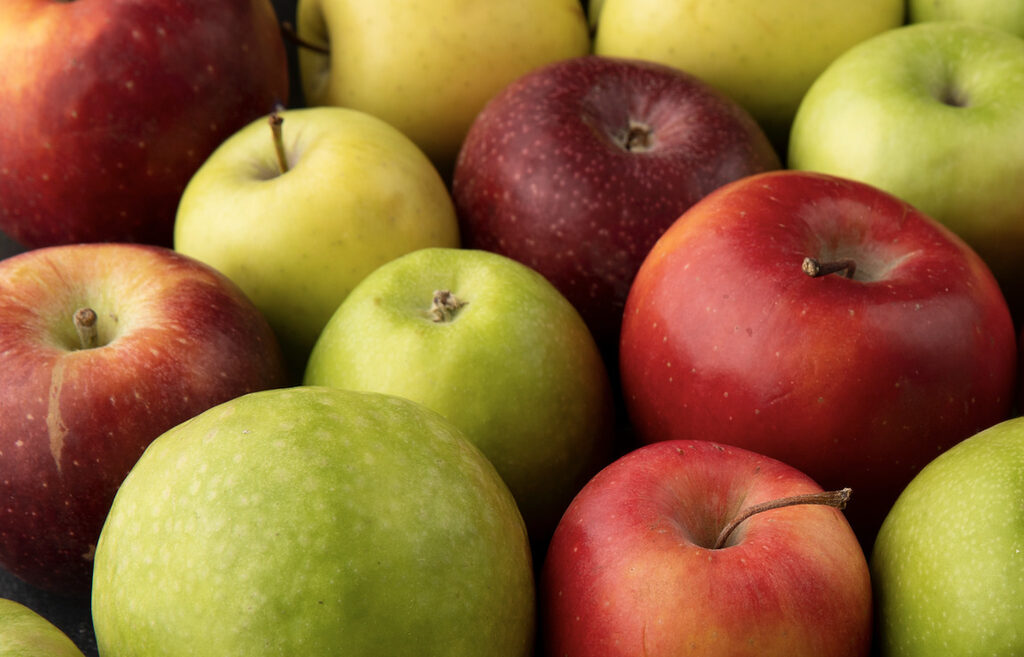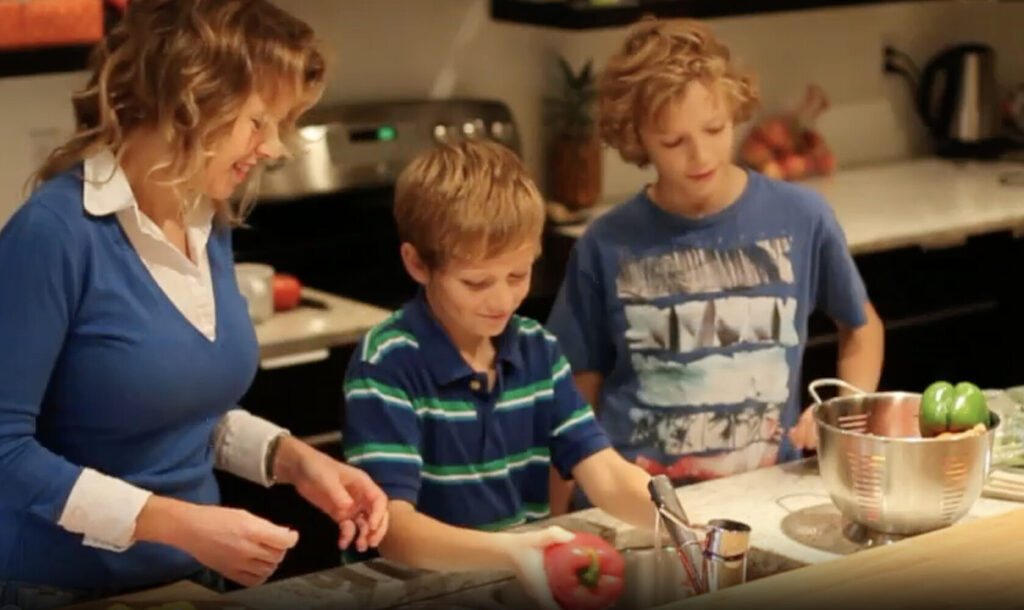This question was the focus of a large-scale study conducted in Canada, Holland, and New Zealand, and the results revealed that up to 70% of seniors, aged 65 and over currently living at home are at risk of undernutrition.
Recently I had the pleasure of being interviewed by Catherine Morasse, news reporter from Radio-Canada, on this trending topic, and I would like to share it with you by clicking on this link
If you prefer, the following is a written summary of the interview, Enjoy!
As we get older, it’s normal to have a little more difficulty eating because we often experience limitations influencing our way of eating. Here are some examples:
- Skipping meals. For example, people will say, “I’m going to skip lunch because I’m not very hungry, and I don’t feel like cooking.”
- Difficulty chewing food. Over time, we may lose a tooth or two. This makes it more difficult to chew a piece of fresh broccoli as it’s not as easy as it was when we were younger.
- Difficulty swallowing without choking, due to decreased saliva production.
- Decreased consumption of water and liquids.
- Difficulty shopping for groceries, among other things, because quality food is not necessarily available at the closest grocery store.
These situations and others can arise over the years and have the possibility of putting seniors at risk of unexpectedly losing too much weight, which increases the risk of undernutrition:
What is undernutrition in seniors?
Undernutrition is an imbalance between what we eat and what our bodies need, which can lead to muscle loss and sometimes even a decrease in adipose tissue (fat mass).
When we suffer from undernutrition, we feel weaker and sometimes feel that our arms and legs are less muscular than before. This can affect our energy levels, our health, and our independence.
Is it the same if we were undernourished at age 20?
No, it’s not the same thing. At 20, you’ll recover much more quickly. You’ll eat better and regain your strength more quickly.
What are the consequences of undernutrition amongst seniors?
The risks of the following health problems are higher for seniors:
• Falls
• Fractures
• Hospitalization
• Bed sores
• Loss of autonomy
• Developing diseases such as high blood pressure
• Risk of Alzheimer’s disease
• Accelerated aging
• Deterioration of overall health
Can we improve our chances of staying healthy as we age?
YES!! WE CAN ALWAYS IMPROVE OUR HEALTH CHANCES AS WE AGE, AND THIS IS TRUE AT EVERY STAGE OF LIFE, IT’S NEVER TOO LATE TO TAKE CARE OF YOURSELF!
What do Canadian seniors tend to lack in their meals?
A source of protein. The recommended minimum protein intake required for adults aged 19 is 0.8 g of protein per kilogram of body weight per day. However, when it comes to people aged 65 and over, the recommended minimum intake increases to 1.0 to 1.2 g of protein per kilogram of body weight per day; and this requirement will increase depending on the frail health condition of the elderly person.
Examples of meals that provide the recommended amount of protein for seniors.
- Breakfast: Oatmeal made with milk or a plant-based protein drink, a banana, 2 tablespoons of nuts, seeds (chia, flax)
- Lunch: Turkey breast, mashed potatoes, carrots, and broccoli.
- Snack: Apple, cheese, and crackers.
- Dinner: Vegetable and lentil soup, served with whole grain bread and olive oil, as well as a pear, and strawberry yogurt for dessert.
This might seem like a lot of food, and it’s not always easy to eat all of it when you’re a senior. The trick is to eat until you’re full, trying to taste a little bit of everything, so that your meal is more balanced.
What about the protein powders that are available today?
The answer is mixed. That is to say, a very small percentage are nutritionally interesting because they contain only one ingredient, for example, pea protein. However, the vast majority are not recommended because they often contain far too many ingredients (additives) as well as artificial sugars (sweeteners).
Typically, people often think that to get a good protein intake, we need to only increase proteins. It is rather that we wish to globally ensure that most meals are healthy, that is from morning to night and from Monday through Sunday. The more complete, varied, and healthy our meals are, the more efficiently our body will use the protein-rich foods (eggs, red or black beans, poultry, fish, meat, edamame, etc.) we feed it.
What are some solutions to undernutrition in seniors?
Good news, there are many ways for seniors to be be well nourished, here are 7 examples:
- Add colour to your plate by including as many vegetables as possible. For those who may not be able to chew raw vegetables easily, simply oven-baked vegetables, enjoy soups, or stews. Filling your plate with a variety of vegetables such as cauliflower, carrots, turnips, peas, etc. is extremely beneficial to your health!
- Try to have an overall healthy nutrition including a variety of protein sources with each meal, such as eggs in the morning, fish at lunchtime, and beans in soup or salad at dinner.
- Drink water. As we age, we feel less thirsty, which is normal. Other healthy options to increase water intake would be to drink herbal teas, teas, or soups with reduced salt.
- Enjoy adding oil and healthy fats to your meals. For example, if you’ve made spaghetti for dinner, you can add olive or canola oil to your pasta. You can also add nuts to your breakfast and canned sardines or salmon in your lunch.
- Add a minimum amount of salt or sugar to your cooking and take the time to taste your food before seasoning it. If you find that your meal requires seasoning, sprinkle herbs, dill, basil, garlic, or lemon juice.
- Take vitamin D3 every day, unless (in rare cases), you have been advised not to do so by your health care provider.
- Multiply the number of opportunities to take the time to eat a relaxing meal with the ones you love. Share your meals with your family, friends and neighbours. Try cooking for your children or grandchildren.
At any age, there is always an action we can do to continue improving our health, and as a result increase our chances of living comfortably in our own home, for as long as possible!
Photo: freepik; The white bread could be replaced by delicious whole grain bread :)



